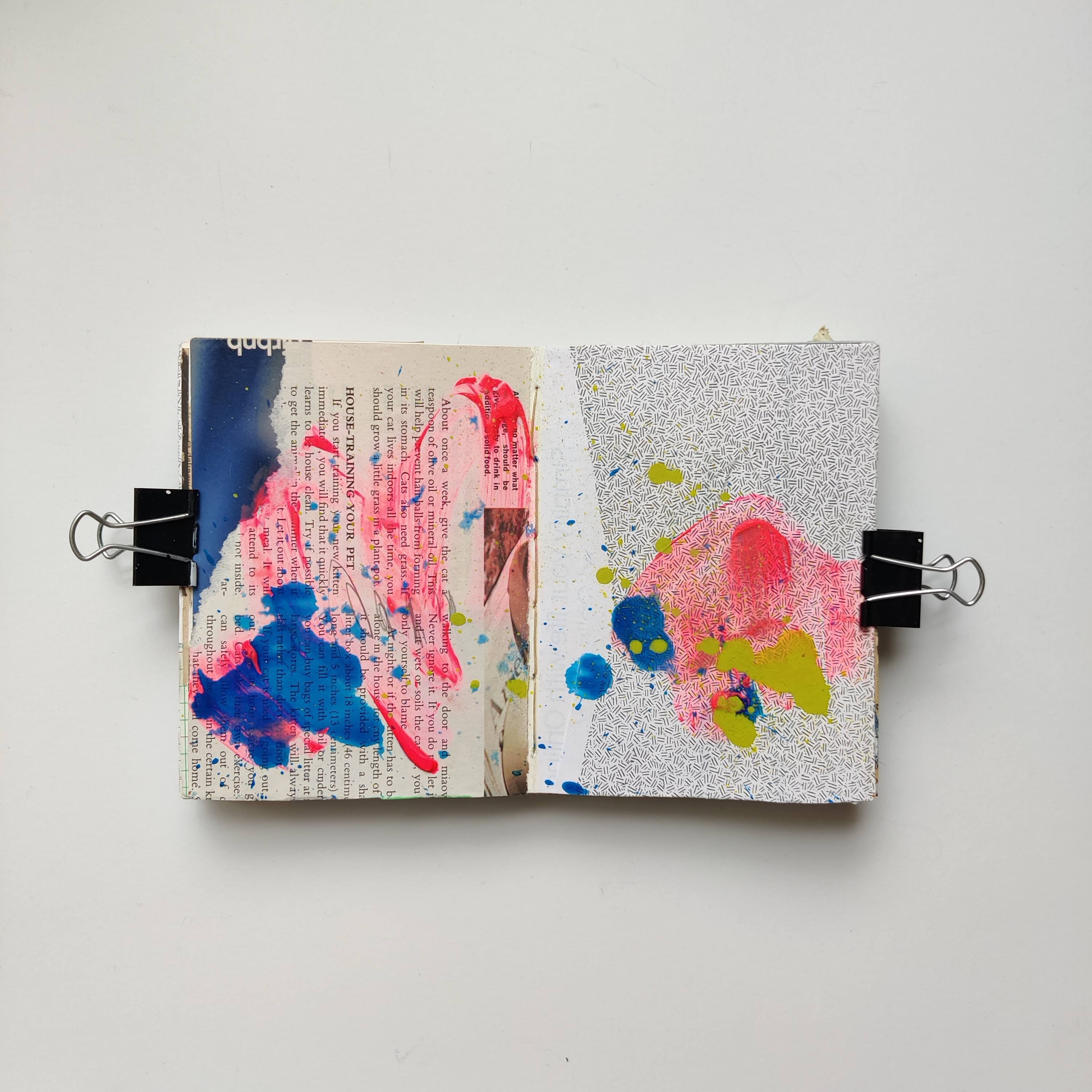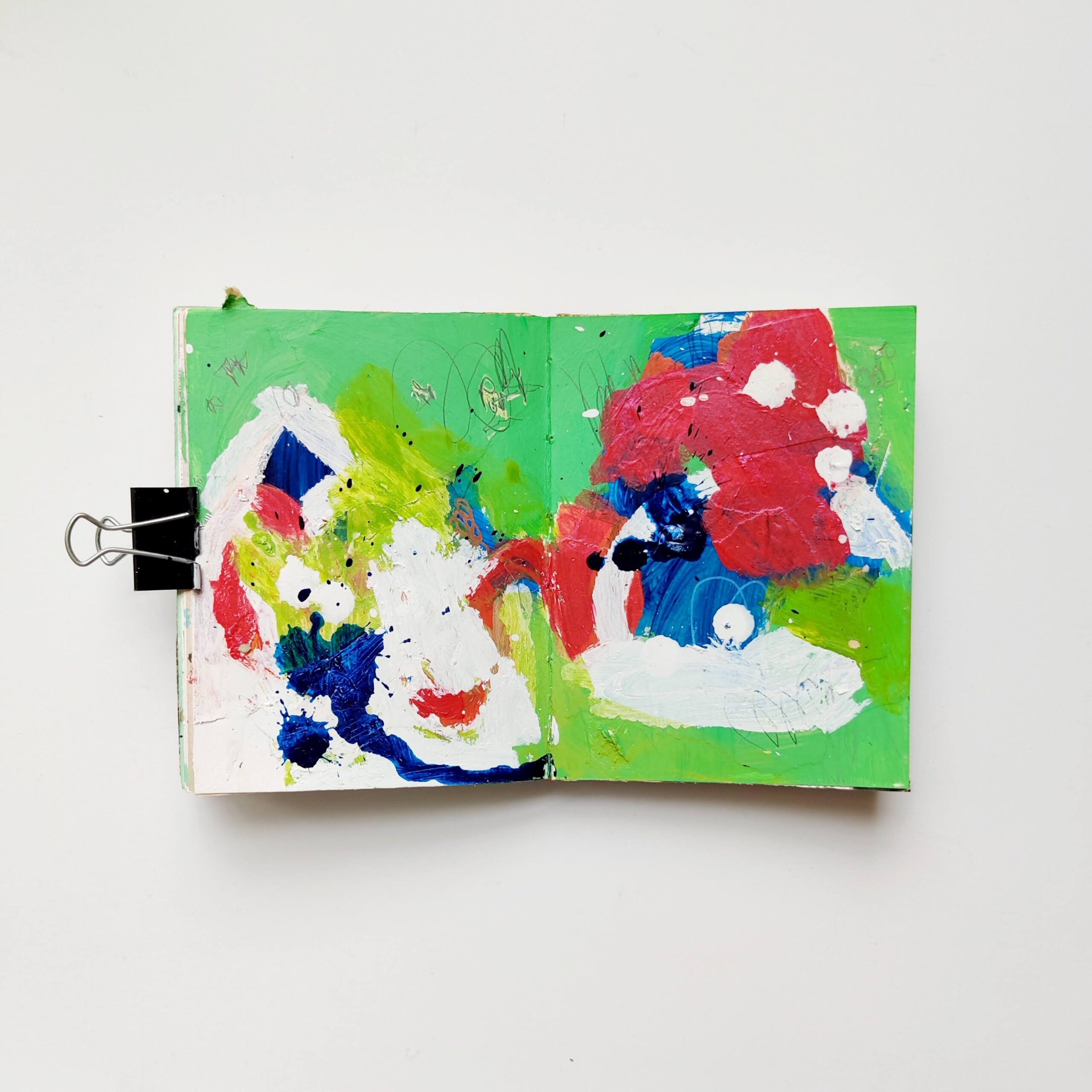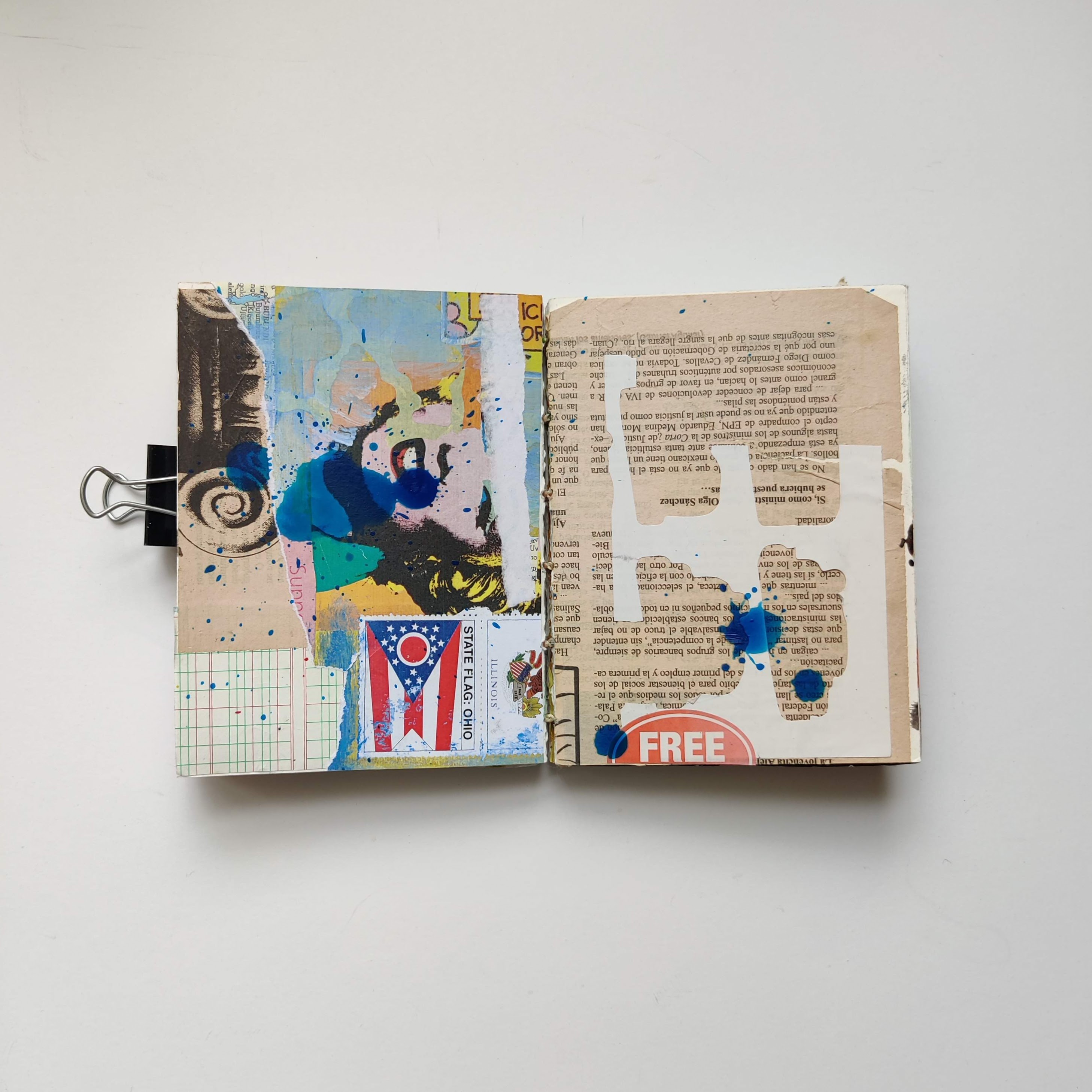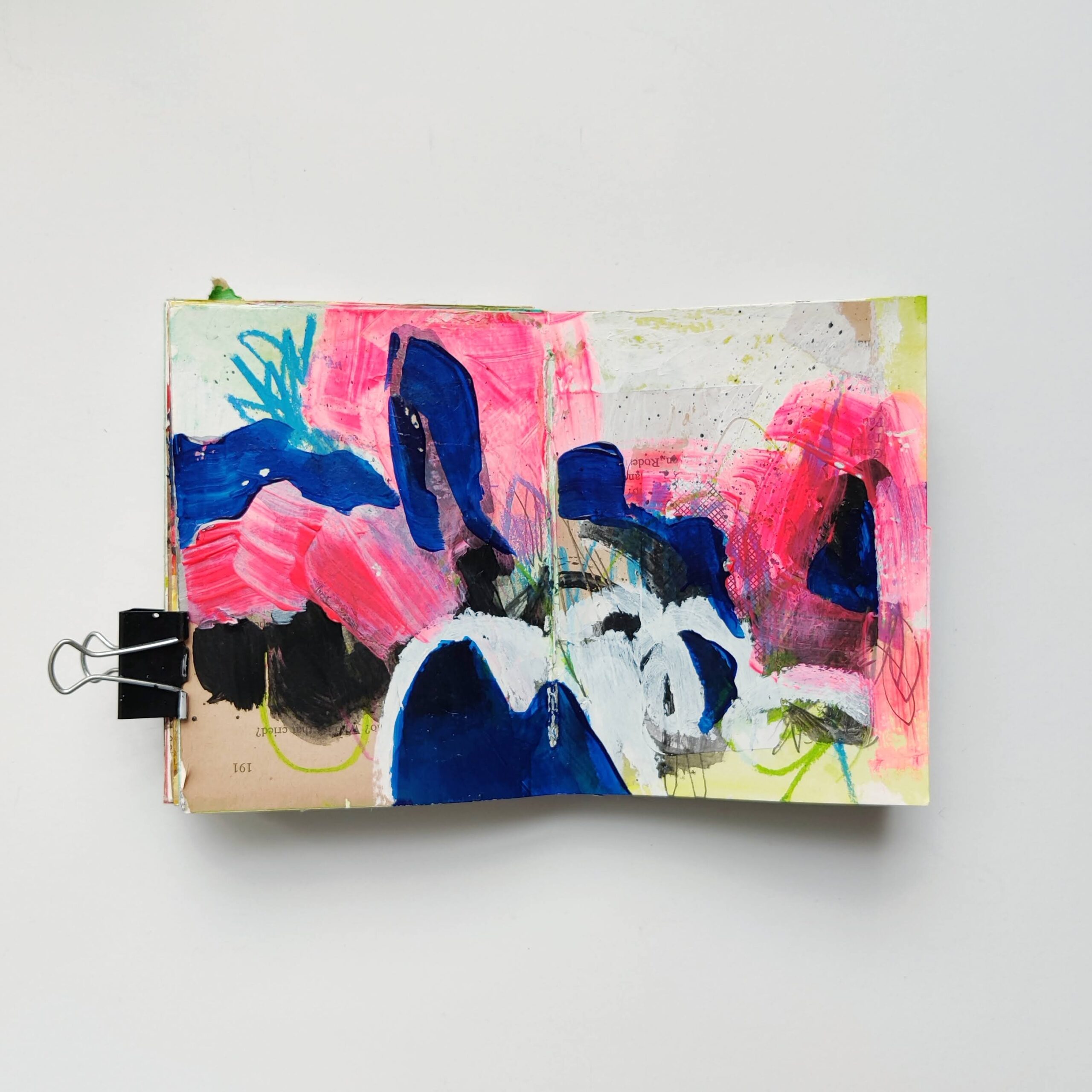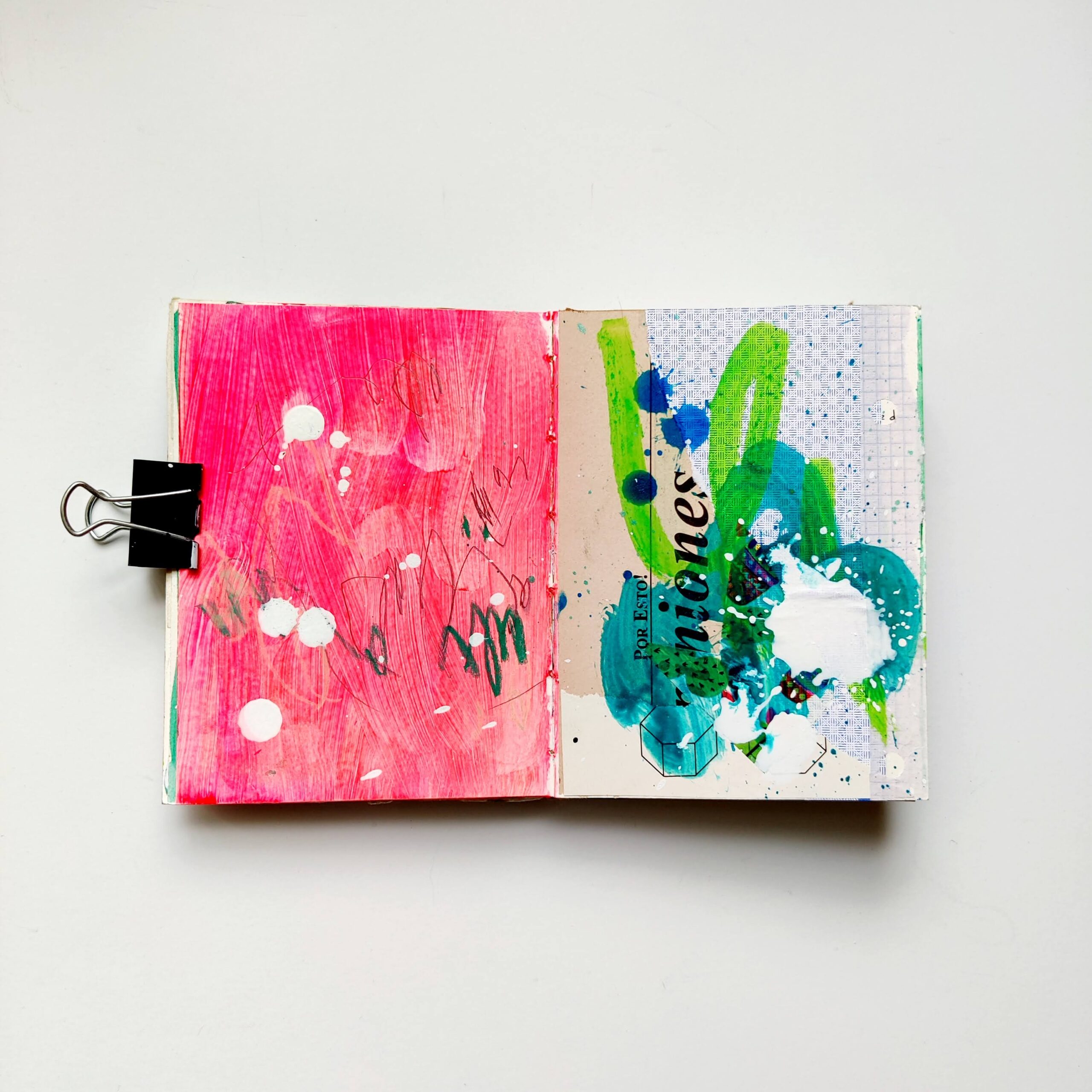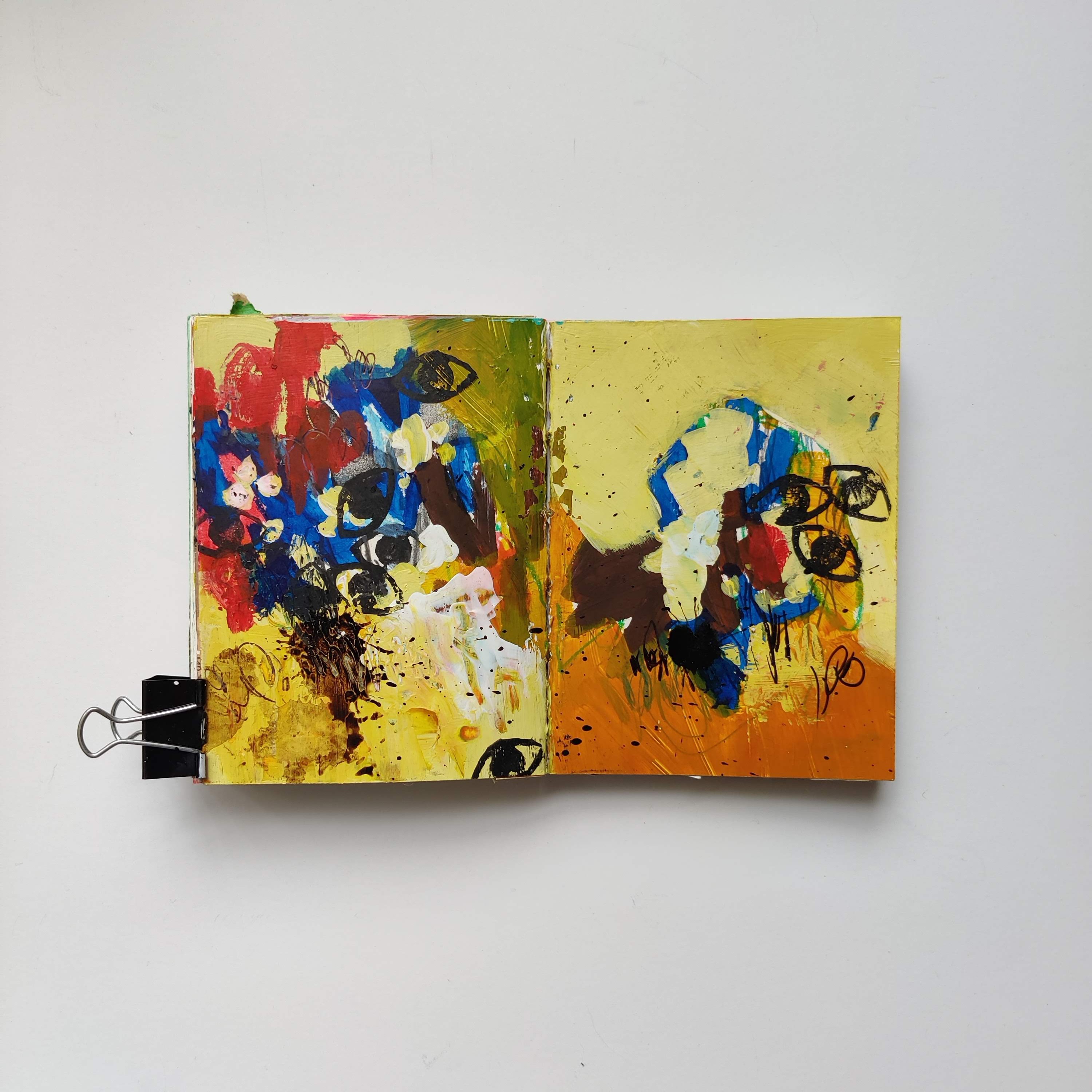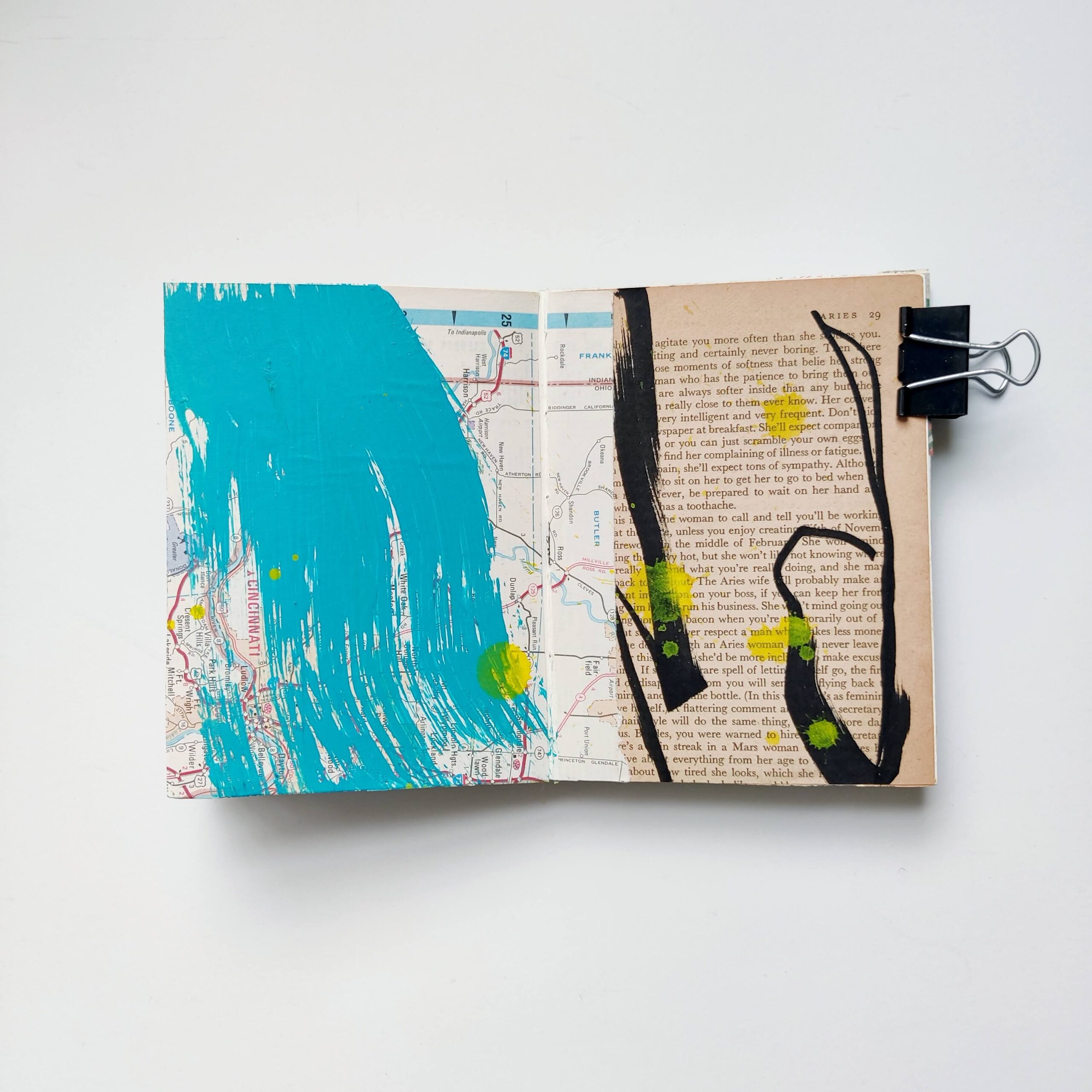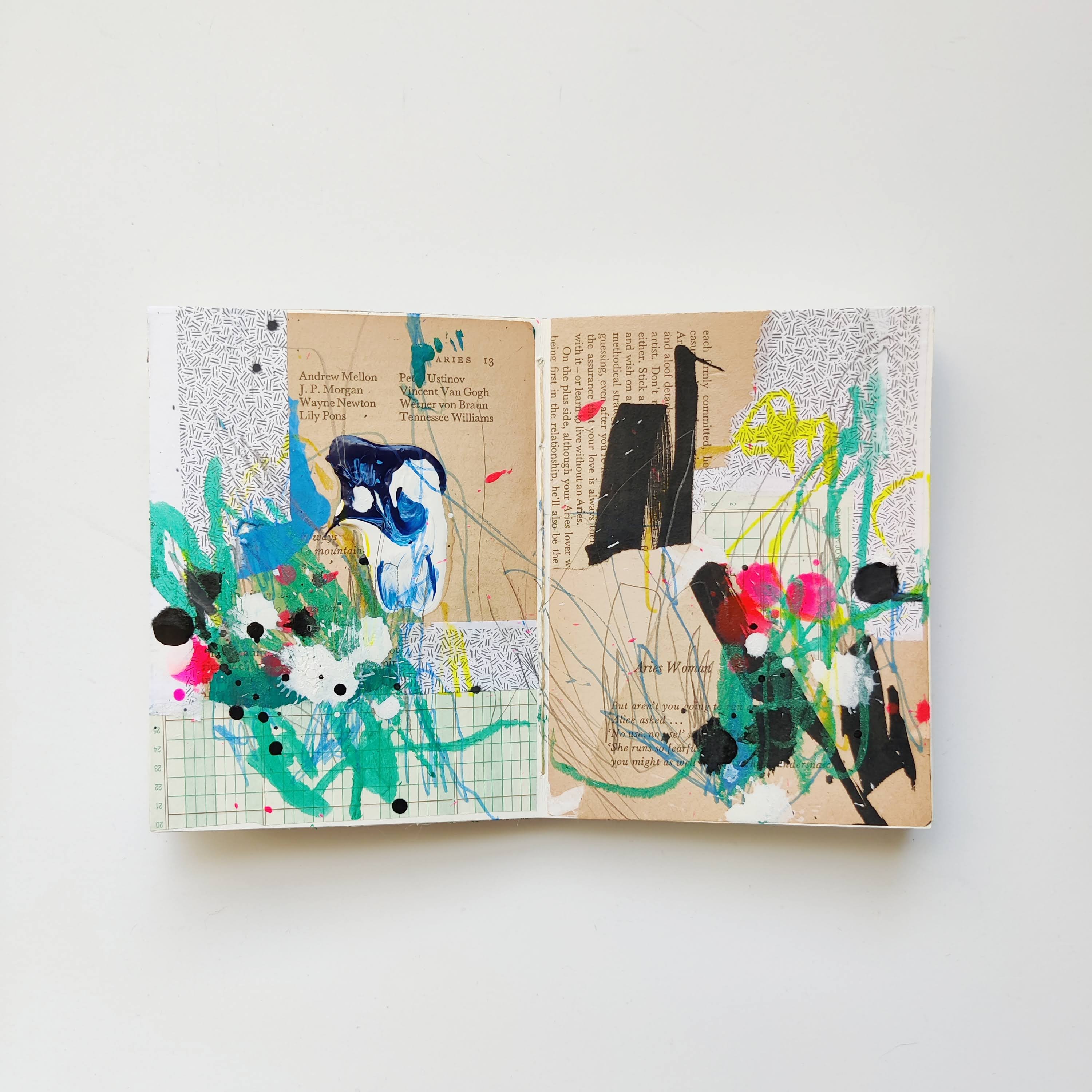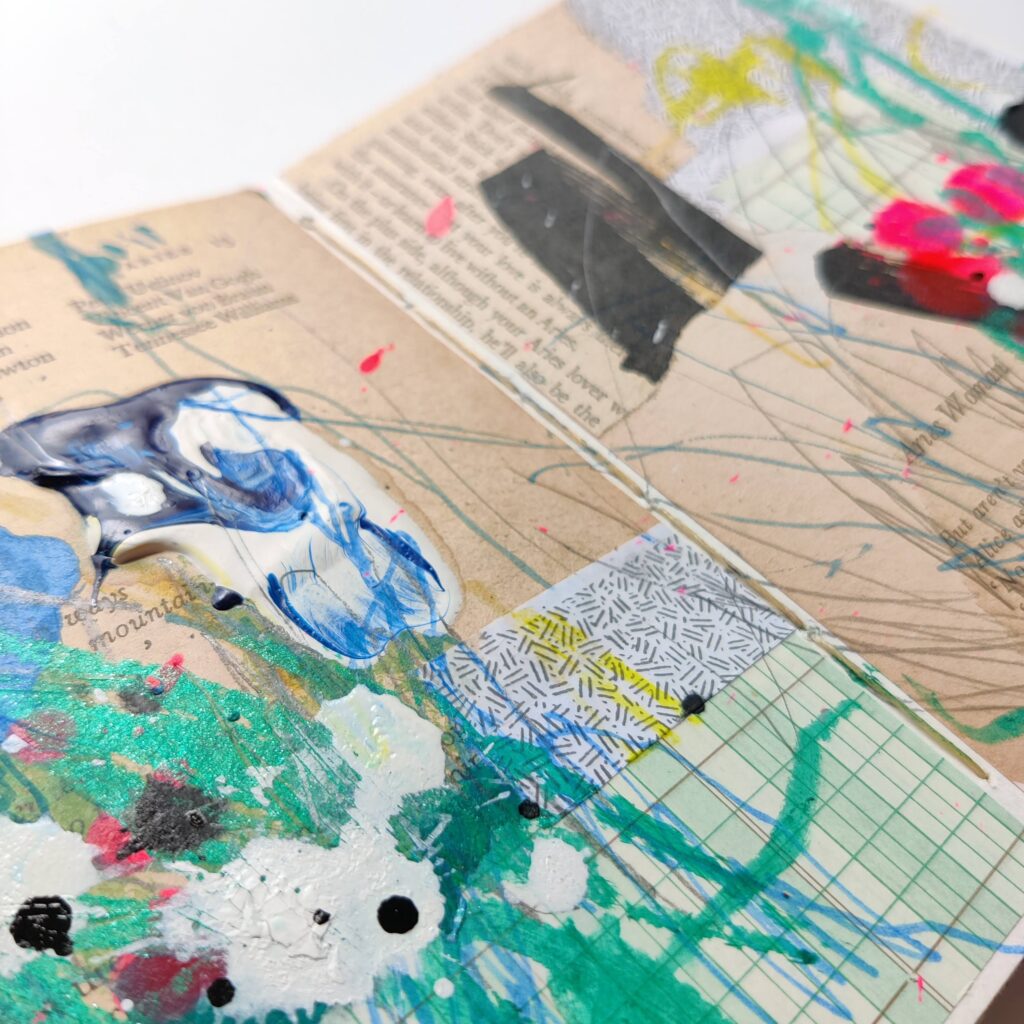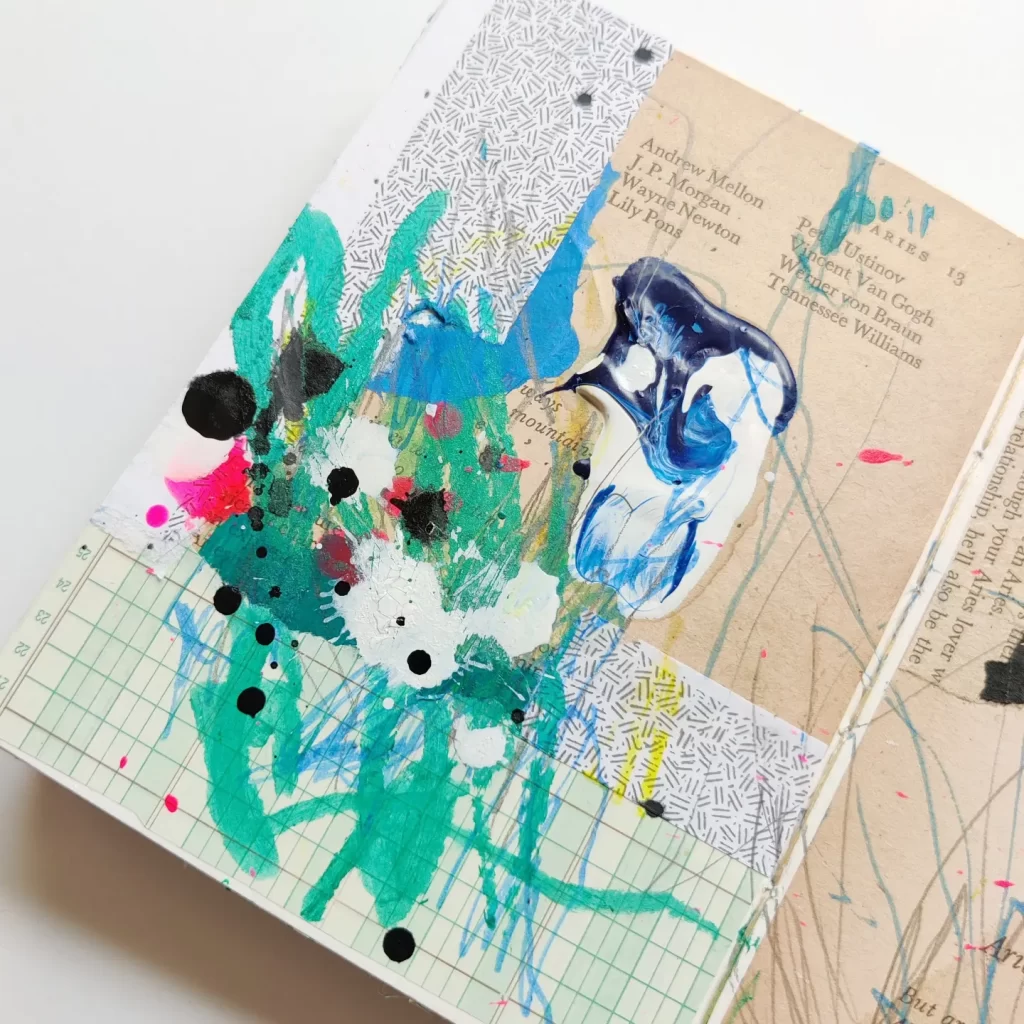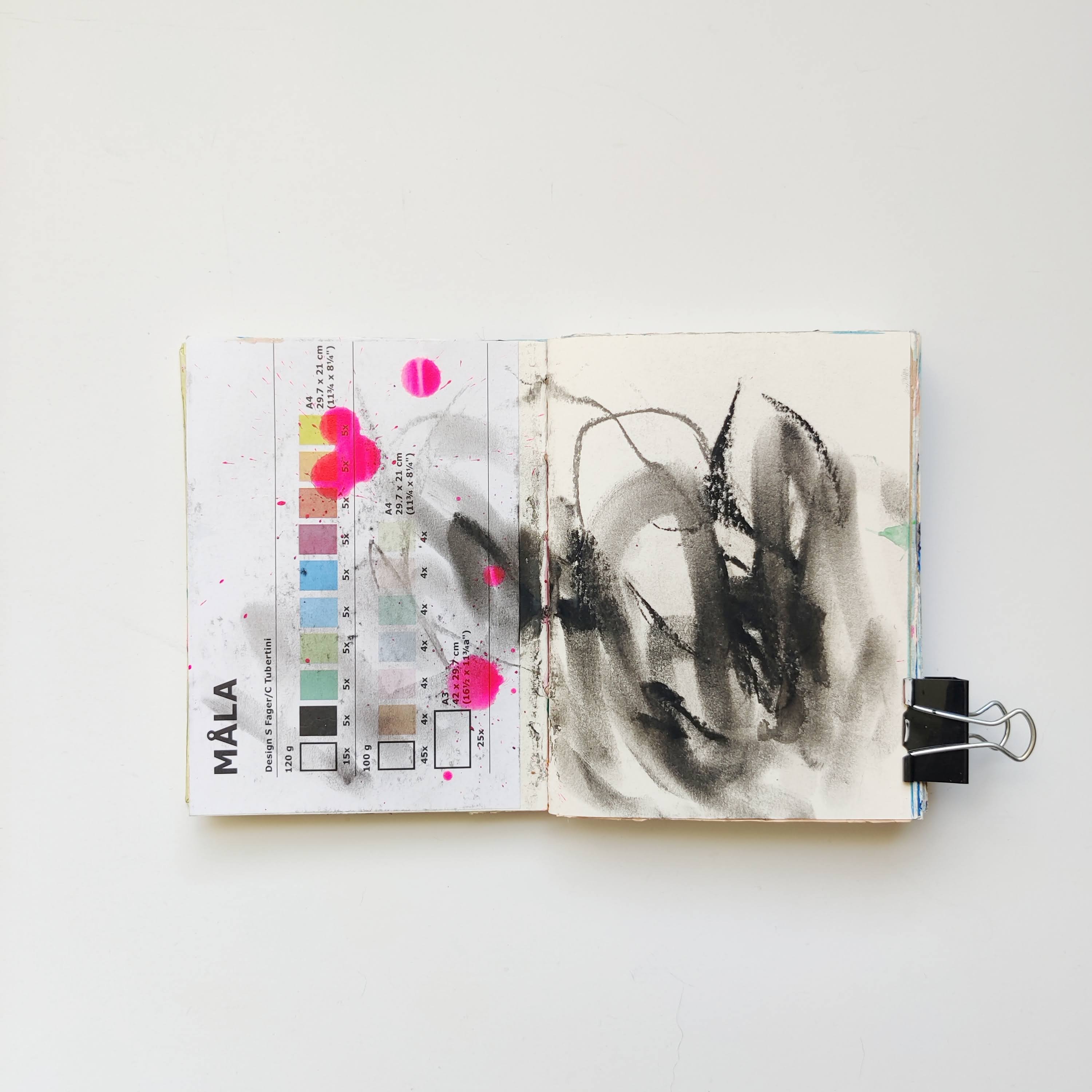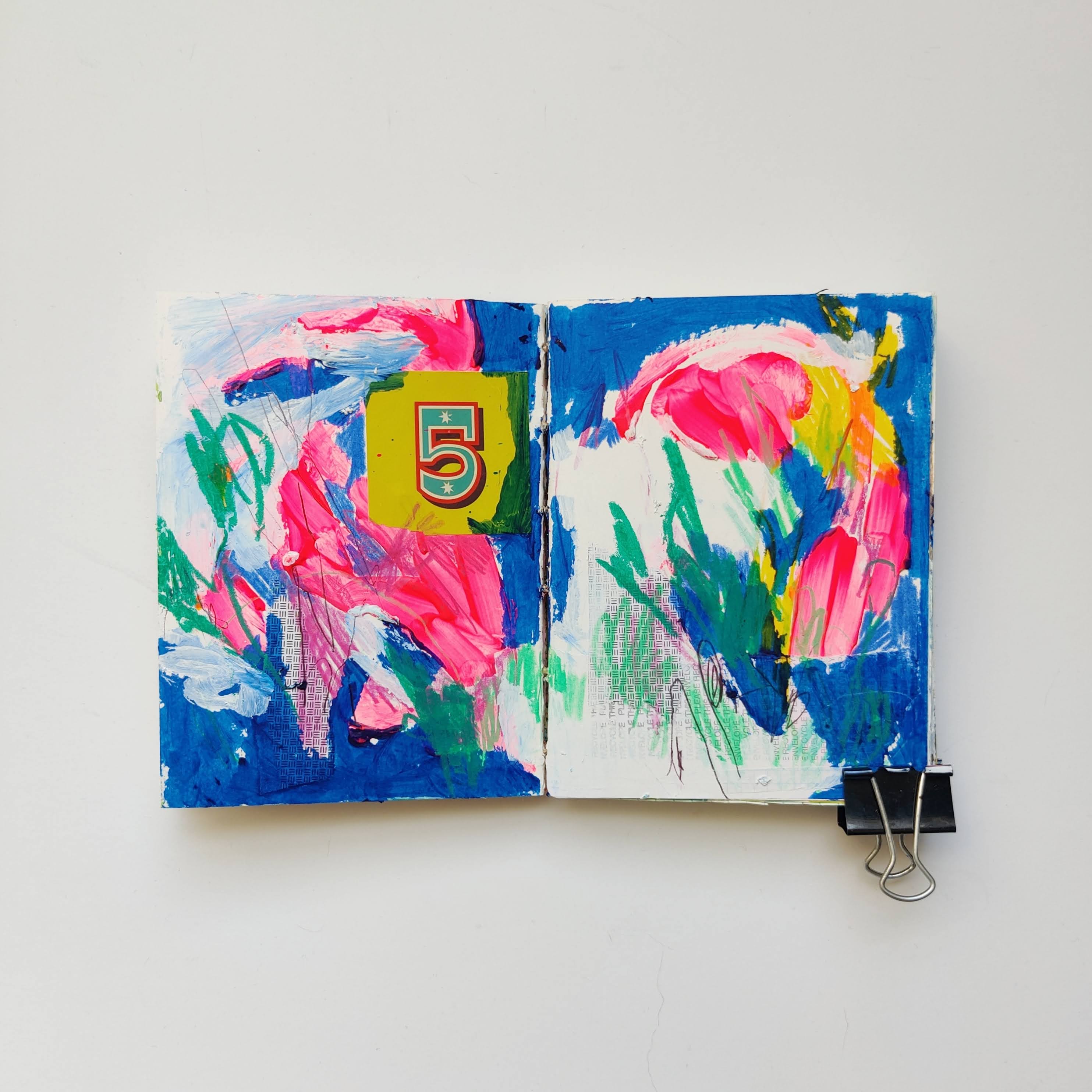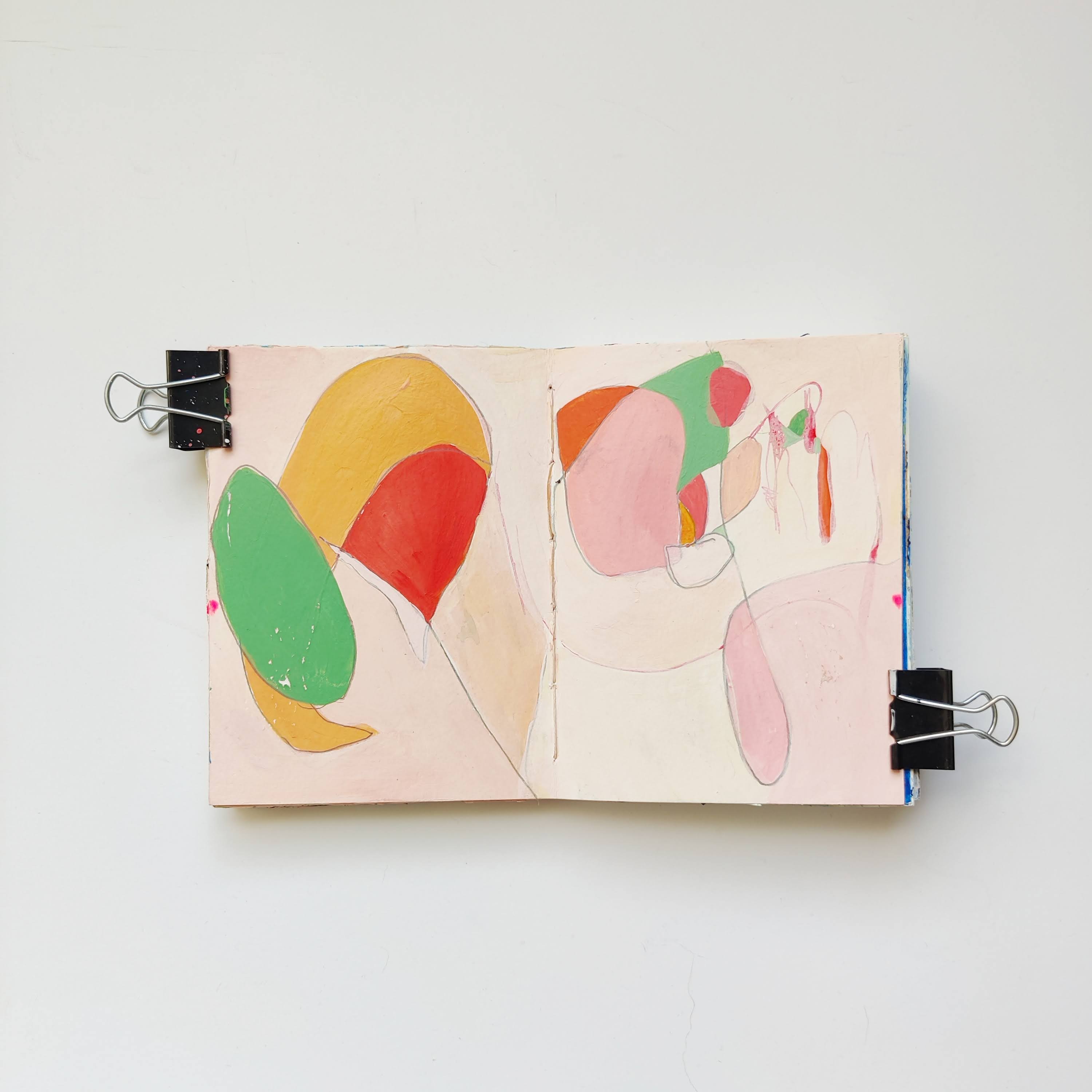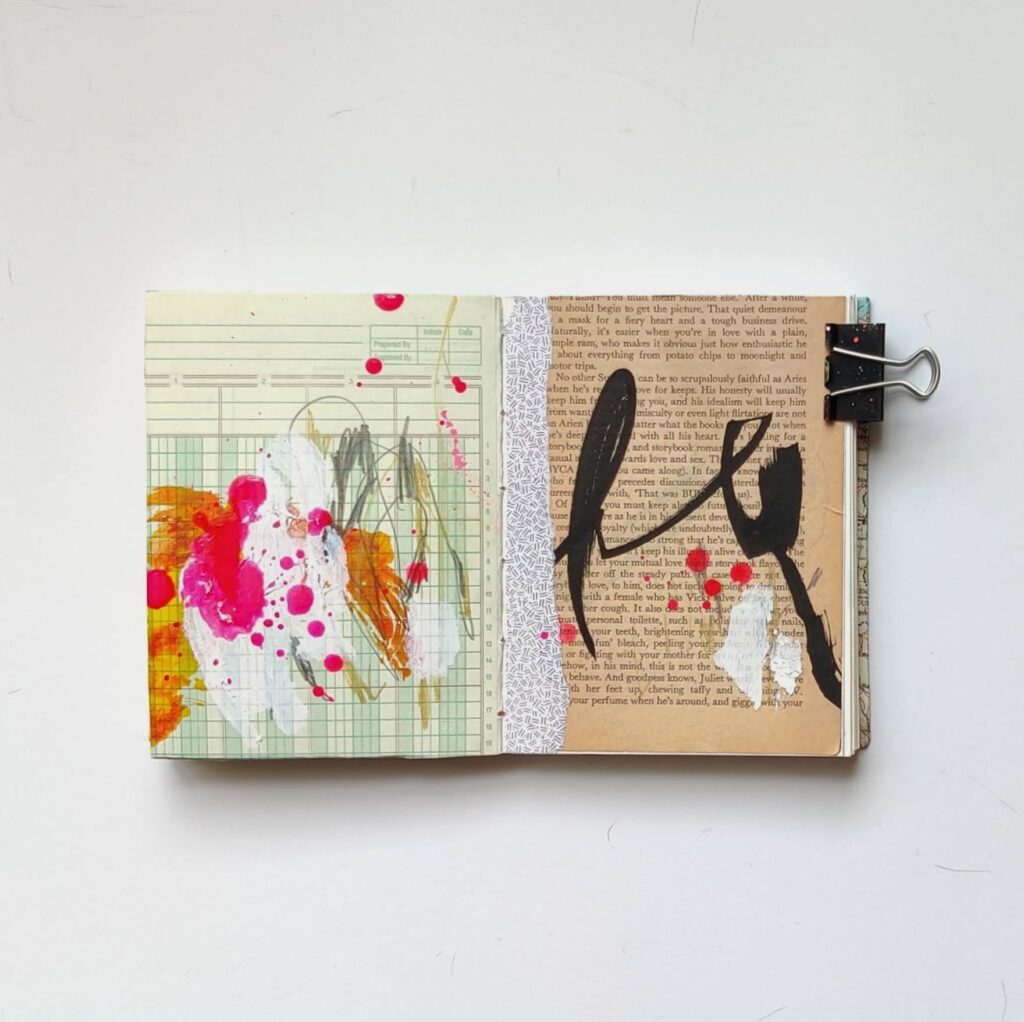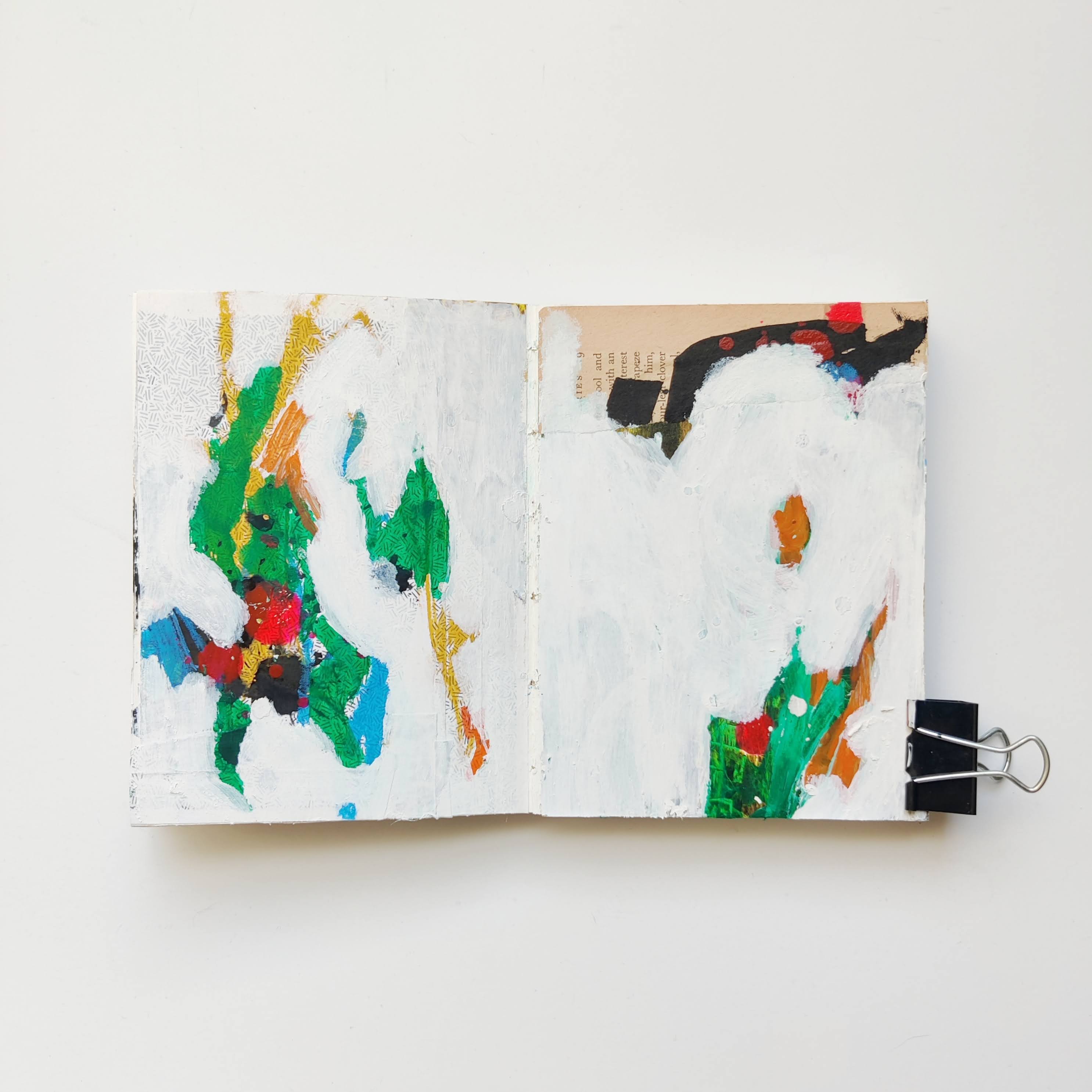Art journaling is, at its simplest, creating visual art in a book. Also called an artist sketchbook, visual diary, or art diary, art journals have been used by artists for centuries for a variety of purposes. Leonardo da Vinci, Joan Mitchell, and Frida Kahlo all kept visual diaries over the course of their lives.
I’ve been working as an art journaler since 2009 after finding iHanna’s beautiful and inspirational blog. Over the course of the years, I’ve experimented with a range of book sizes, mediums, and processes.
But art journaling is accessible, easy — there are, really, no rules — and anyone can do it. All you need to do is choose a book, get inspired, and make some art.

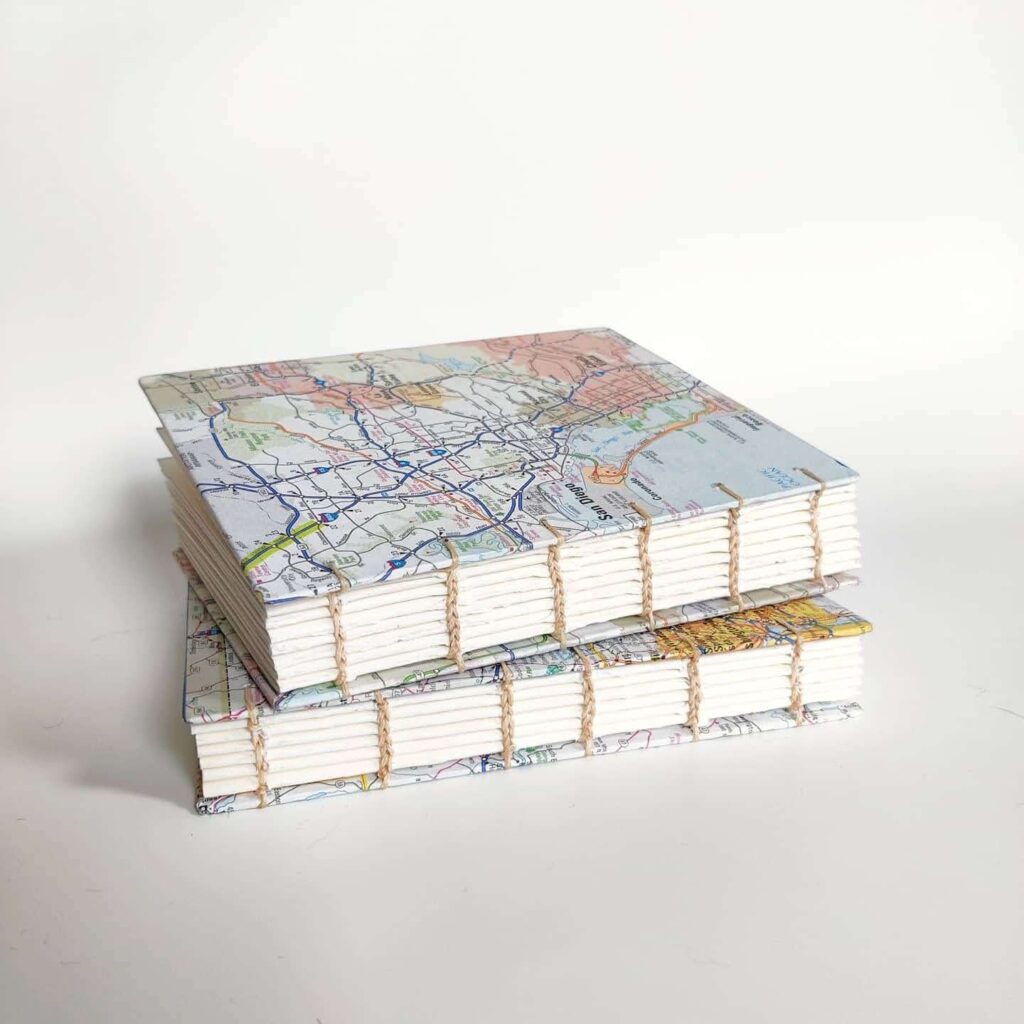
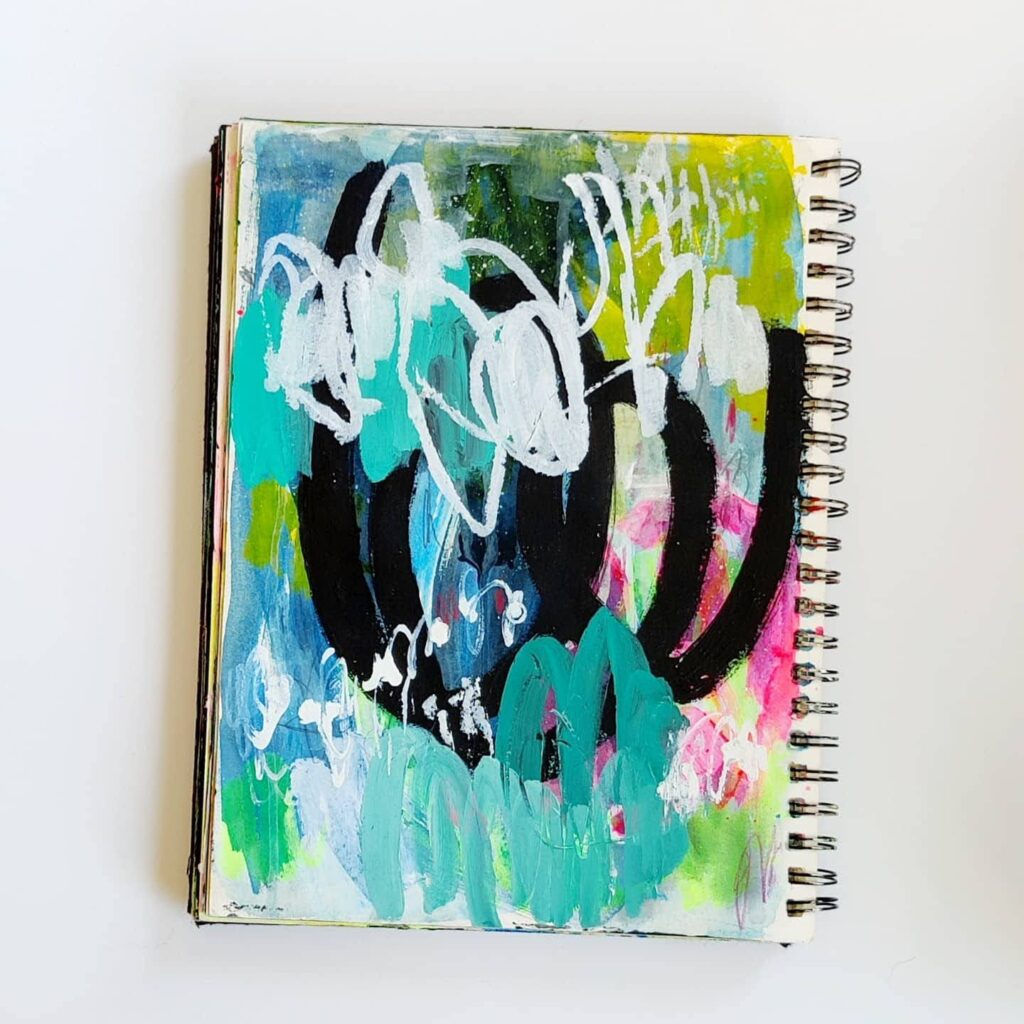

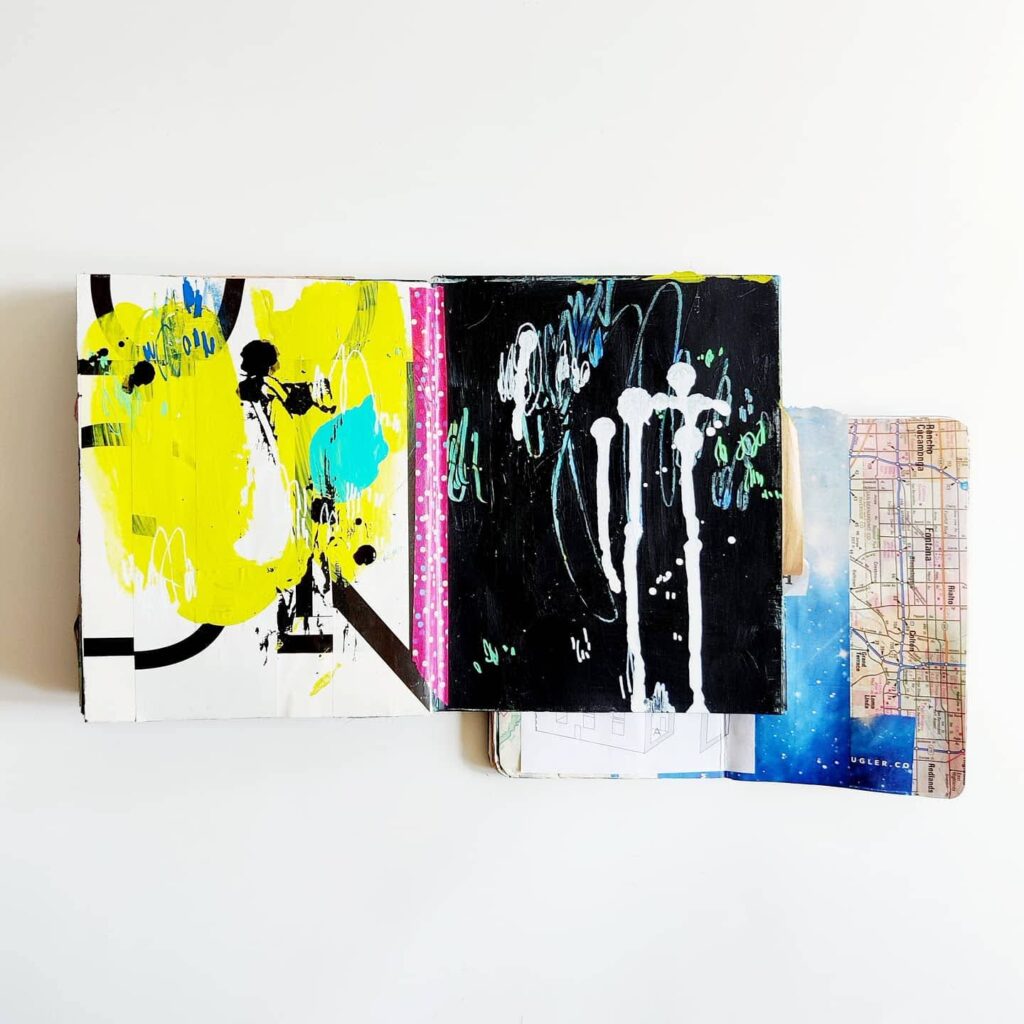
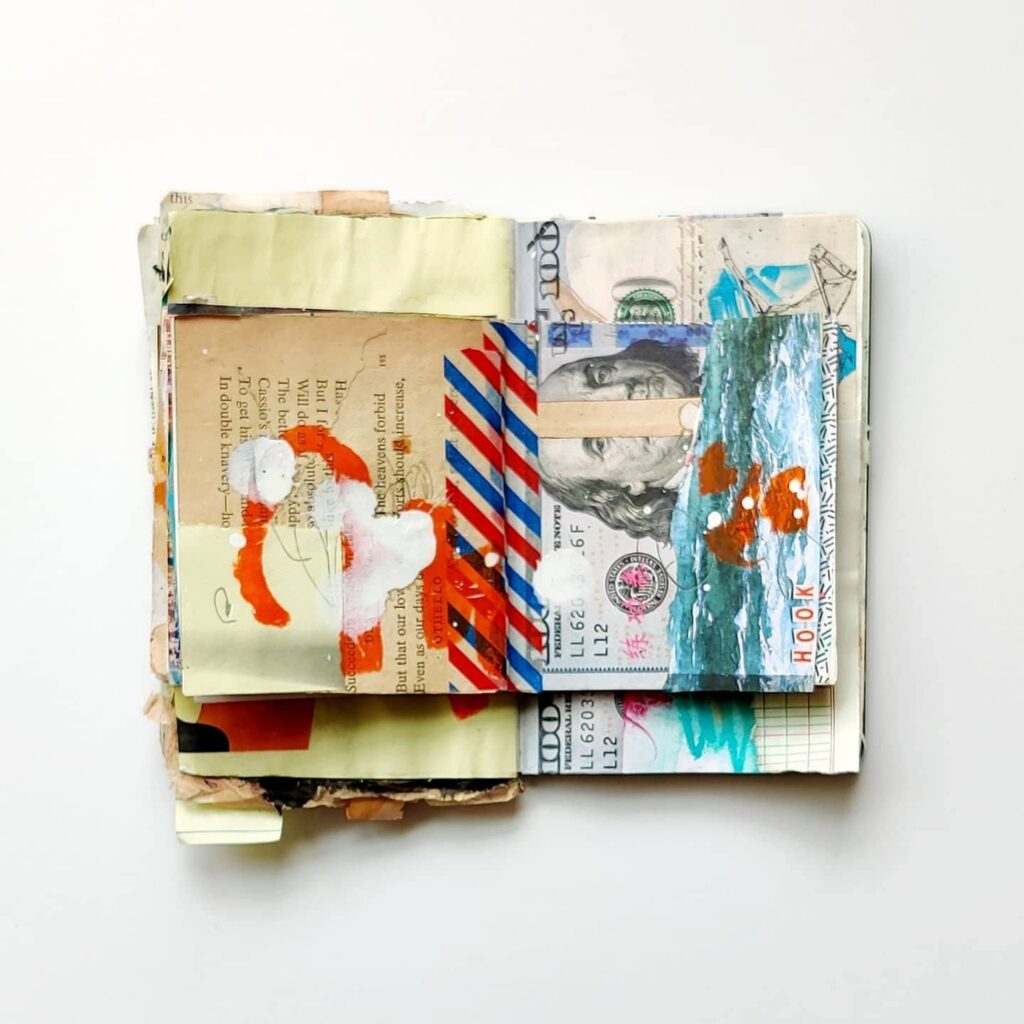
Choose a book
There are so many options when choosing what to use as your art journal: teeny books, big books, different page thicknesses, colored pages, books with different bindings, etc. You may go through several types of book before finding the one that works best for you.
I use (currently, anyway) books that I’ve handbound with watercolor paper. My last few art journals have been about 5×7 inches (about 13×18 cm), which I’ve really loved. I also really enjoy working in thrifted books: you aren’t starting with a blank page, and any pages that you tear out can then be used as collage material.
Anything that sparks your interest will do: spiral-bound journals, notebooks made for multi-media, composition notebooks, thrifted books, and so on. You could also use loose-leaf pages and sew or staple them together later. Depending on quality of the paper, you may want to glue several pages together (say, three pages at a time throughout the book) to create a sturdier surface for your media.
Whatever you choose, I’d suggest starting out with books with fewer pages at first: you’ll be able to test out how the paper takes your medium without a lot of pressure. You may get discouraged if you have another 300 pages to fill of a book that isn’t working for you.
Get Inspired
Find and follow artists whose work you like — the #artjournal and #artjournaling hashtags on Instagram are a great way to look through lots of different kinds of books and discover new artists that you otherwise might not come across.
Check out books about art journaling. The 1000 Artist Journal Pages (please find it at your library or buy from your local indie book store if you can!) in particular is a huge compilation of artist pages with a variety of styles. Stampington’s Art Journal Magazine is also a great resource.
Go to your local art store, dollar store, or craft store and see what supplies pique your interest. I’ve used a range of cheap and unusual supplies in my art journals, including sticky notes, highlighters, staples, ballpoint pens, and crayons. Thrift stores also have a ton of used books and magazines that are great for collage. Art journaling doesn’t have to be expensive!
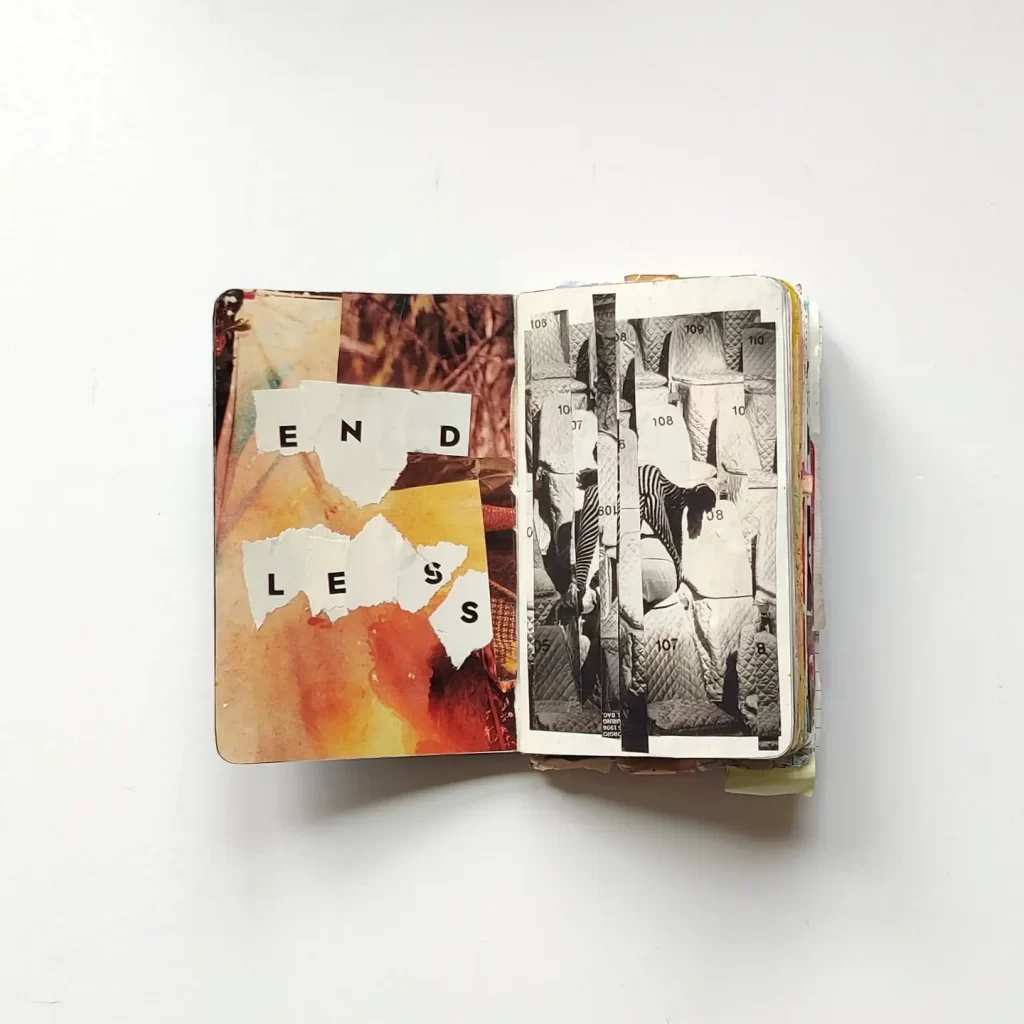
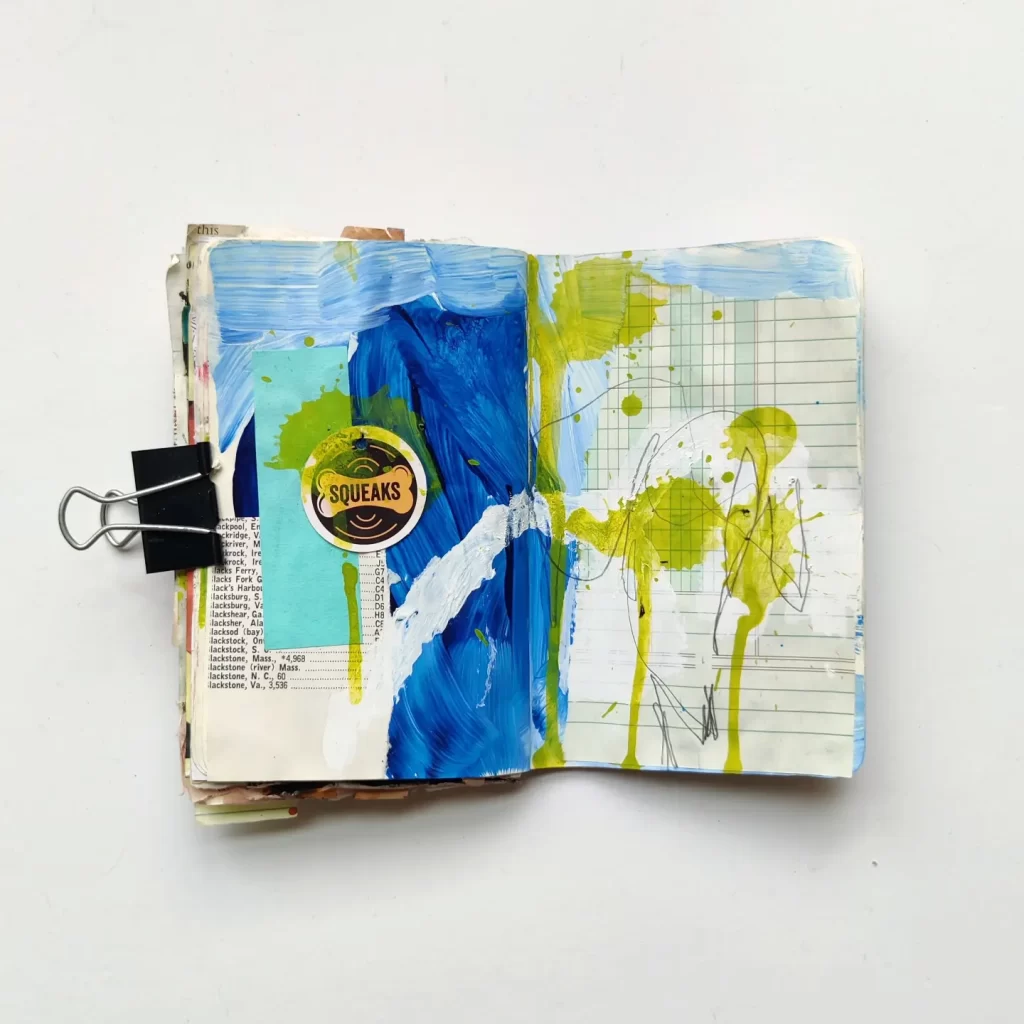
Make some art
There are no rules about what you add to your book: there is no one way to art journal. But it can be intimidating to start, so here’s a list of materials you could experiment with:
- Collage materials: lined or graph paper, thrifted book pages, maps or pages from an atlas, tissue paper, security envelopes, images cut out of magazines, photographs, found lists, ticket stubs, cards, wrapping paper, newspaper, etc.
- Paint: acrylic paint, tempera paint sticks, watercolor, gouache, India ink. You can use water to thin or mix colors, or lay it on thick, or let it drip or splash on the pages.
- Glue: matte medium, gel medium, a glue stick, hot glue, rubber cement, tape, glue dots — experiment and see what you like working with best! Keep in mind that some adhesives will hold up better than others in the long term, and only some are archival (ie., will not yellow over time). Be sure to read the label to see what each product offers.
- Other mark-making tools: oil or chalk pastels, water-based markers, paint markers, charcoal, ballpoint pen, colored pencil, graphite, stamps, crayon, etc.
My favorite mixed media tools right now are book pages, acrylic ink, oil pastel, and pencils.
The biggest takeaway
But above all, the most important piece about art journaling is have fun. Create for yourself — there’s no need to share with others (in person or online) if you don’t want to. Your art is for YOU. Make mistakes. Be messy. Make ugly art. Enjoy the process!
And if you have any questions about art journaling, need some encouragement, or want to share what you’re working on, I’d love to hear from you.

